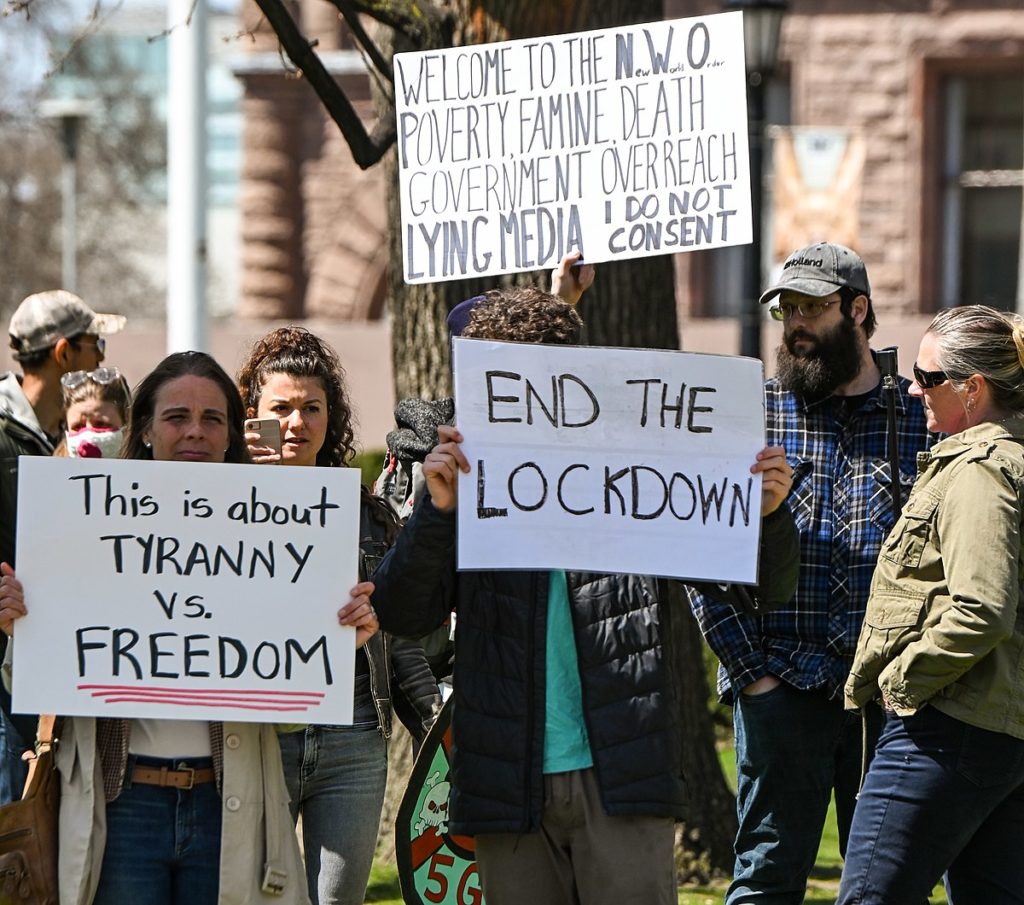How a Non-Insane Covid Response Probably Will Hurt Democrats Next Week

You’d like to think that smart, sensible public health policies that saved hundreds of thousands if not millions of lives would pay off with the voters. You would be wrong.
Nearly two years later, pollsters rarely ask voters about COVID policy; it is no longer front of mind. But the coronavirus, and the methods and emotions of its management, has supplied the fuel for just about every turn in politics since Biden’s Inauguration. This is the pandemic-backlash election. Follow the biographies of the most surprising political figures to emerge this year and there is often a pandemic-induced point of departure. Doug Mastriano, an extreme Christian conservative who is now the Republican nominee for governor of Pennsylvania, built a political base by staging nightly pandemic messianic fireside chats over Facebook Live, which he followed with an anti-vaccine-mandate rally at the state capitol. Kari Lake, who started the pandemic-backlash period as a local news anchor in Phoenix and is ending it as the slight favorite to be the next governor of Arizona, told Time’s Eric Cortellessa, “You couldn’t question anything about Covid. That’s where I had a problem. I just felt like, wow, this has ceased being journalism. It is pure propaganda.”
But, more than the characters, the pandemic backlash has supplied campaigns—and, in particular, conservative candidates—with issues. The education fights that galvanized social conservatives and dominated Fox News through 2021 started with frustration at school closings and intensified when parents began to scrutinize their children’s curricula during the Zoom-classroom phase. The Republican emphasis on crime and urban chaos took root when workers stayed home and left city streets mostly free of daily traffic, making the homeless population, which grew during the pandemic, more visible, and when public-health imperatives accelerated the political push to shrink jail and prison populations. Most of all, the inflationary pressures that have defined the midterm elections initially took shape when consumers were staying home and spending more on goods than services. These issues have had a partisan significance, in that the Democratic story about the pandemic has given way to a Republican one. But there is another way to put it. The politics of COVID are no longer about death and disease, but about public-health restrictions.
Several of the Republican governors who oversaw especially permissive COVID regimes are up for reëlection this fall, and their management of the crisis has generally not been something Democrats have been eager to criticize. In the debate between Beto O’Rourke and Governor Greg Abbott, of Texas, the pandemic was not a major topic. In the Georgia gubernatorial debates, it has often been the Republican incumbent, Brian Kemp, who has been eager to emphasize how quickly he moved to allow businesses to reopen during the pandemic. In Florida’s gubernatorial debate, when the moderator did raise the issue, it was to challenge the Democrat, Representative Charlie Crist, about whether his call for caution in the summer of 2020 had been ill-advised. The moderator said, “Florida was slowly reopening under Governor DeSantis while Democratic members of the state’s congressional delegation, including Congressman Crist, were calling for new stay-at-home orders and a statewide mask mandate. Looking back more than two years later, are you satisfied with your approach to the COVID response, Congressman?”
I don’t really know what to say here because it cuts so hard against what we would all like to think.
So this is what I will say.
When you govern, you do what is right. You can’t help if the voters will pay you back or not. You govern to do the right thing. It probably will doom you. But what is the alternative? Massive death in this case. If voters aren’t going to repay you for making sure they don’t die, well, what are you going to do?
